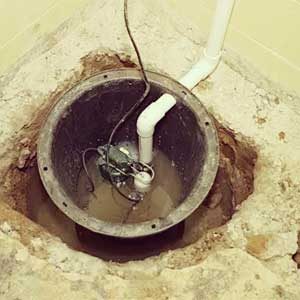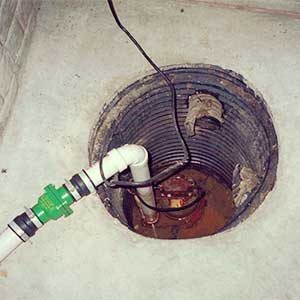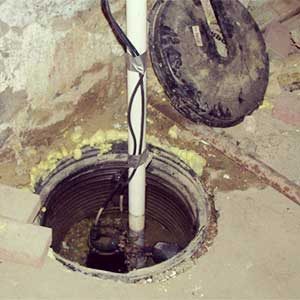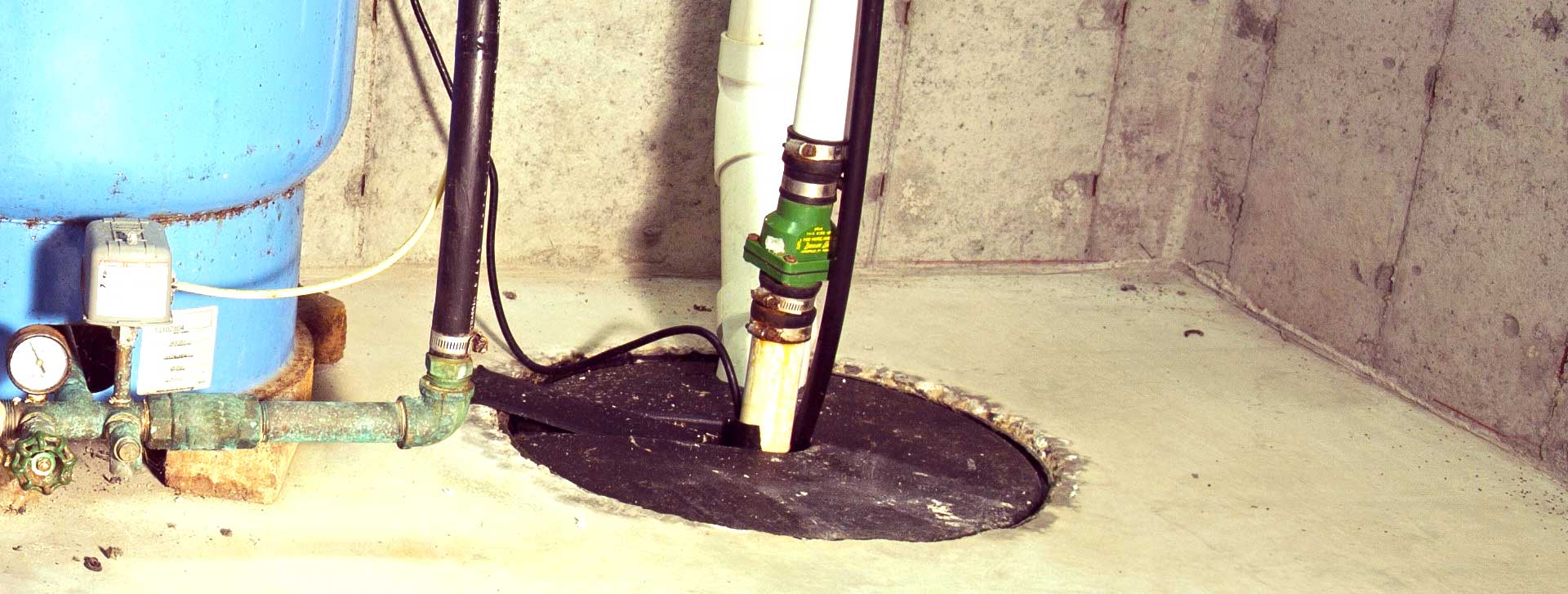In Toronto, basement flooding is rather common. We have the heavy rains in the summer and fall, there is the snowmelt in the spring, and there are many areas where the water table is high enough to allow water to seep in through a home’s foundation when it rains.
To protect against this flooding, a sump pump is one of the most important pieces of equipment that you can have in your basement. When water accumulates in a basement, the pump can help to remove it, and this can protect your property against water damage.
If your Toronto home does not have a sump pump in the basement, then you should definitely consider the benefits of having one installed. If you already have one, then it is important to take the necessary steps to ensure that is ready for any event that could cause water to get into your basement.
Having a sump pump is just the beginning of protecting your home. If you want to make sure that it works, then you need to stay on top of regular maintenance. Any number of things can occur to cause a sump pump to stop working, so regular inspections and maintenance are the keys to ensuring proper operation.
By performing the necessary sump pump maintenance, you are taking a step toward protecting your home against flooding. In addition to that, regular sump pump maintenance will also help to ensure that the device has a long operating life. In this article, we are going to take a closer look at sump pumps, and the types of maintenance that can help to prevent failure.
How does a sump pump work in a basement?
 If you live in Toronto and find that your basement has problems with flooding, you are certainly not alone. It is a common problem in the area, and with rainfall that seems to be increasing every year, it looks like it is a problem that is only going to get worse.
If you live in Toronto and find that your basement has problems with flooding, you are certainly not alone. It is a common problem in the area, and with rainfall that seems to be increasing every year, it looks like it is a problem that is only going to get worse.
The good news is that there is a simple device that can solve most of your basement flooding problems. In this, we are talking about your sump pump. A sump pump is a pump that is specifically designed to deal with problems relating to basement flooding. Most sump pump systems consist of three major parts: you have the pump itself, the sump pit and the discharge line.
In general, you have two types of sump pumps. You have pumps that have a submersible design. With this design, the pump sits in the sump pit and it can still operate underwater. This type of sump pump tends to be a little more expensive, but they are usually a little more durable than the pedestal design.
On the other hand, you have the sump pumps with a pedestal design. With this type of sump pump, the motor is at the top of the pump and sticks out from the cover. These sump pumps are not designed to be submerged in water, but they can be good for smaller sump pits.
When installing a sump pump, the pit will usually be placed in the lowest part of the basement, and it will also be connected to the home’s weeping tile system. As the level of the groundwater rises, the weeping tile system will direct the water to the sump pit. In addition to that, if water actually gets in the basement, the pit’s position at the lowest point in the basement floor will allow the water to run down to the pit.
As the water rises in the sump pit, it begins to raise a float switch. As the float switch goes up, it engages the switch that turns the pump on. The pump draws water in through the intake and expels the water out through the discharge line. As the sump pit empties, the float switch will move back down. When the float drops low enough, it will turn the pump off.
Why is my sump pump not working?
While a sump pump can be great for protecting a home against basement flooding, sump pump failure is far from uncommon. As with any machine that has a motor, sump pumps do have an operating life and they will eventually stop working. However, most problems with sump pump failures tend to come back to a lack of proper maintenance or it could even be something simple like it not being plugged in.
If your sump pump is not working, there are a few troubleshooting steps that you can take to try to diagnose the problem, and possibly get it running. If you have run through all of these steps, and still find that it is not working, then it is time to call in a professional.
You’ll want to check these three things first:
- Does it have power?
- Is it clogged?
- Is the float switch working?
When you are dealing with a sump pump that is not working, you should start by looking for simple solutions. It may seem obvious, but the first thing to check is the plug. People often unplug the sump pump to use the outlet, and then they forget to plug it back in. If it is plugged into a GFCI outlet or GFCI protected circuit, you should check to make sure that it has not tripped.
If the pump has power, then you want to check to see if it is clogged in some way. Take a look at the inlet screen to see if there is any debris or general muck clogging the intake. Sump pumps are usually handling water that has a lot of sediment and debris, so the screen can get clogged fairly easily.
After checking the intake for any type of obstruction or clog, you will want to check the discharge line to make sure it is clear. The discharge line does go to the exterior of the house, so it does have the potential to get clogged. As an additional point, it could freeze or get blocked up with ice or snow.
Finally, you are going to want to look for any float switch malfunctions. When a sump is in operation, it causes a significant amount of vibration. This vibration can cause the pump to move, and the switch could get stuck in the off position. Check to make sure the float can move when the pit fills with water, and make sure the float is engaging the switch when it rises.
How many years should a sump pump last?
 If you have gone through all of the above-mentioned steps and still find that your sump pump is not working, then it is time to call in a plumber. With any luck, the plumber might be able to inspect the unit, find a simple problem and get the sump pump working again. That said, it is just as likely that your sump pump has reached the end of its operating life, and it might need to be replaced.
If you have gone through all of the above-mentioned steps and still find that your sump pump is not working, then it is time to call in a plumber. With any luck, the plumber might be able to inspect the unit, find a simple problem and get the sump pump working again. That said, it is just as likely that your sump pump has reached the end of its operating life, and it might need to be replaced.
People often ask the expected operating life of a sump pump. The problem with this question is that there is no single answer. Several factors apply when it comes to the number of years that a sump pump might work. A sump could die in just two or three years, but some of the good ones have been known to last ten to fifteen years. They could even last longer depending on the conditions.
First, you have to consider the quality of the sump pump. You might have to spend a little more money, but the more expensive sump pumps tend to last longer. Then you have to consider the conditions to which the pump is subjected. If your sump pump needs to run more often, then it is not going to last as long as a pump that runs infrequently.
As a final point, you have to consider how well the pump is maintained. If you just leave your sump pump in the basement and forget about it, then it is not going to last as long. If you take the time to maintain your sump pump, then you are taking steps to ensure that it will have a longer operating life.
Maintaining a Sump Pump
If you want to extend the life of your sump pump and make sure that is ready to go when you need it, then maintenance is an important concern. For sump pump maintenance, we recommend inspecting and testing the pump at the beginning of the spring and fall, and we also recommend an annual cleaning to go along with one of these inspections.
Start your inspection by making sure the machine is plugged in and that the outlet is supplying power to the pump. Follow this by checking the discharge line for any obstructions, and take a look at the intake to make sure that it is clear. After that, you can check the sump pit and remove any debris that you may find.
After you have performed this quick inspection, you will want to test the operation of the pump. Get a bucket with a few gallons of water and dump it in the pit. Make sure the float rises, and that when it does rise, that it engages the pump. You will also want to observe the water to make sure that the pump is actually working.
You may also want to consider a backup power source. Flooding can come with power outages, and if the power goes out, your sump pump will not work. Some sump pumps have battery backups, and some homes might have backup pumps that run on batteries. You could also consider buying a generator to power your sump pump in the event of a power outage.
How do you clean out a sump pump?
 As I mentioned above, you will want to give your sump pump a thorough cleaning at least once a year. This cleaning will ensure that it operates as efficiently as it can in the event of flooding, and it will also help to extend the life of the machine.
As I mentioned above, you will want to give your sump pump a thorough cleaning at least once a year. This cleaning will ensure that it operates as efficiently as it can in the event of flooding, and it will also help to extend the life of the machine.
To start cleaning your sump pump, you are going to want to unplug the machine and disconnect the discharge line. Remove the pump from the pit and bring it outside. Since it could still have some water in it, you may want to be careful about bringing it through the house.
Give the intake screen a good cleaning and flush the machine out with clean water. This can help to flush out any dirt or debris that may have built up in the system. While you have the pump removed from the pit, you can take this opportunity to give the sump pit a good cleaning, and it is also a good opportunity to give the discharge line a thorough cleaning.
Once you have cleaned the sump pump system, you can replace the pump in the sump pit. In replacing the pump, make sure to reconnect the discharge line and plug the machine back in. After you have the pump repositioned and reconnected, you will want to test it by dumping a few gallons of water in the pit.
For such a simple device, a sump pump plays an important role in protecting your home against basement flooding. Unfortunately, many homeowners never even think to perform regular sump pump maintenance, and the importance of this task is not realized until it is too late. Sump pump maintenance does not take a lot of effort, and it is a critical step in keeping your basement dry, so there is really no excuse for letting it go for too long.
After reading this post, you should be equipped with all of the information that you need to keep your sump pump running. The regular inspections and cleaning will extend the life of the machine, and if there is something wrong with the pump, the inspections will at least help to ensure that you have the time to get a professional on the job before you need the machine to go into action. Even if your plumber can’t fix the sump pump, getting it replaced before a flood is always better than finding out that it doesn’t work when the water starts to rise in your basement.

